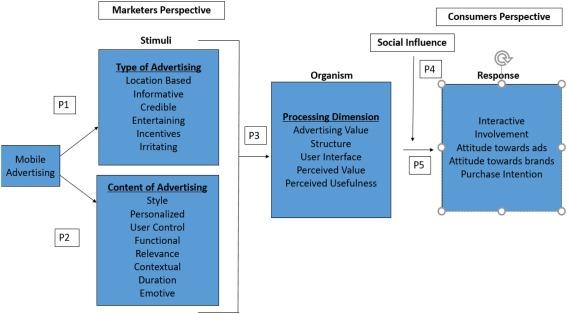Top Challenges in Implementing SEL Curricula: Key Obstacles & Solutions Explained
Social Emotional Learning (SEL) has emerged as a cornerstone of modern education, helping students develop critical skills such as empathy, self-awareness, and conflict resolution. As schools across the globe recognize the profound impact of SEL on academic and personal success, the integration of structured SEL curricula is on the rise. However, the journey toward effective SEL implementation is rife with challenges and obstacles.In this thorough guide, we’ll unpack the top challenges in implementing SEL curricula, explore key obstacles, and provide actionable solutions to overcome them.
What is Social Emotional Learning (SEL)?
SEL involves teaching students to understand and manage emotions, set positive goals, show empathy, build healthy relationships, and make responsible decisions. The five core competencies of SEL are:
- Self-awareness
- Self-management
- Social awareness
- Relationship skills
- Responsible decision-making
By embedding SEL objectives into the curriculum, educators aim to create supportive learning environments that nurture both academic and emotional growth.
Benefits of Implementing SEL Curricula in Schools
Before delving into the obstacles, it’s essential to understand why SEL is worth the investment. Key benefits include:
- Enhanced Academic Performance: Students with strong SEL skills tend to perform better academically.
- Improved Behavior: SEL helps reduce bullying, absenteeism, and disciplinary incidents.
- Positive School Climate: Fosters inclusivity, respect, and collaboration among students and staff.
- Lifelong Skills: SEL curricula impart skills that serve students throughout thier lives.
Top challenges in Implementing SEL Curricula
Despite its benefits, SEL integration comes with a unique set of hurdles. Understanding these obstacles is key to crafting effective solutions.
1. Lack of Staff training & Preparedness
SEL initiatives require educators to possess specialized skills. Sadly, many teachers lack formal training in SEL practices and methodologies. This can lead to inconsistencies and reduced efficacy in delivering SEL programs.
- Obstacle: Teachers feel overwhelmed or unqualified to lead SEL activities.
- Solution: Invest in professional advancement, ongoing workshops, and peer mentoring to empower educators with the confidence and competence needed for prosperous SEL integration.
2. Time Constraints & Overcrowded Curriculum
With academic standards to meet and standardized test deadlines, many schools struggle to find time for SEL.
- obstacle: SEL perceived as an “add-on,” rather then a fundamental part of education.
- Solution: Embed SEL into core subject areas and daily routines. For example,incorporate empathy discussions into literature classes or use group projects to teach collaboration.
3. Limited Resources & Funding
Adopting and sustaining SEL programs can be expensive. Schools may lack the budget for dedicated SEL staff, curriculum materials, and ongoing training.
- Obstacle: Insufficient funding for effective curriculum materials and staff support.
- Solution: Seek community partnerships and grants. Leverage free online SEL resources, and utilize local non-profits or mental health organizations for support.
4. Measuring SEL Outcomes Effectively
Unlike traditional subjects, SEL competencies are qualitative and multidimensional, making them harder to assess.
- Obstacle: Difficulty in evaluating SEL progress and impact on students.
- Solution: use both quantitative and qualitative assessment tools, such as student self-assessments, observation checklists, and pre/post programme surveys. Foster a culture of reflective feedback among teachers and students.
5. Resistance from Stakeholders
Parents, teachers, and community members may question the need for SEL, viewing it as unneeded or irrelevant.
- Obstacle: Misunderstandings and lack of buy-in from parents or staff.
- Solution: Educate stakeholders on the benefits of SEL. Share research data, real-life outcomes, and success stories to build support. Offer information sessions, newsletters, and invite stakeholders to participate in SEL activities.
6.Cultural Relevance & diversity
SEL curricula must resonate with students’ diverse cultural backgrounds. One-size-fits-all approaches may exclude or alienate some learners.
- Obstacle: SEL content doesn’t reflect students’ experiences or identities.
- Solution: Tailor SEL programs to be culturally responsive. encourage input from students and families,integrate local stories,and celebrate diversity in lessons and activities.
Case Studies: Real-World SEL Implementation
Let’s look at how schools have overcome SEL challenges:
- Case Study 1: Oakwood Elementary School, CA
Faced with limited resources, Oakwood partnered with a local mental health agency to train teachers and provide curriculum materials at no cost, resulting in a measurable drop in behavioral referrals.
- Case Study 2: Urban Charter School, NY
By embedding SEL into daily routines and aligning it with academic content, teachers reported increased engagement and improved classroom culture within the first semester.
Practical Tips for Successful SEL Implementation
Maximize your school’s SEL program with these actionable strategies:
- Leverage Leadership support: Ensure school leaders publicly endorse SEL initiatives.
- Start Small: Pilot programs with one grade or class before scaling up.
- Foster Collaboration: Involve teachers, parents, counselors, and community members in SEL planning.
- Use Technology: Incorporate digital SEL platforms and apps for interactive learning and assessment.
- Continuous Evaluation: Regularly assess program effectiveness and seek feedback for improvement.
First-Hand Experience: Educator insights
Many teachers are eager about SEL but acknowledge the initial hurdles. Ms. Johnson, a fifth-grade teacher, shares:
Conclusion: Overcoming Obstacles to Effective SEL
Successfully implementing SEL curricula is not without its challenges, but the rewards for students and educators are transformational. By addressing staff training, time management, resource allocation, stakeholder buy-in, cultural responsiveness, and effective evaluation, schools can create robust SEL programs that stand the test of time.
Every school’s journey is unique. A proactive approach—combining collaboration, ongoing professional development, and community engagement—can turn obstacles into opportunities. With SEL, we empower students not just to succeed academically, but to become resilient, empathetic, and responsible members of society.
Ready to Embrace SEL?
If your school or district is considering SEL implementation, start by acknowledging the hurdles—and arm yourself with the solutions outlined above. Social Emotional Learning is a long-term investment in student success. together, let’s nurture tommorow’s leaders, one skill at a time.

